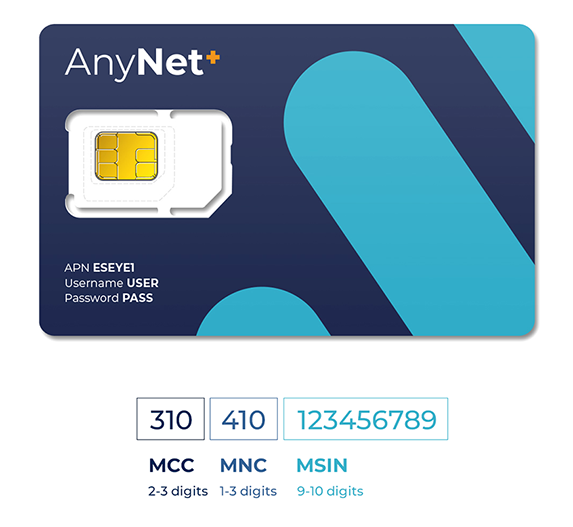IoT Explained
17 October 2023
Reading Time: 3 mins
IoT Explained
17 October 2023
Reading Time: 3 mins

Paul Marshall
Founder & CCO
LinkedInQuick definition: An IMSI (International Mobile Subscriber Identity) is a globally unique number that cellular networks use to identify and authenticate every user and/or device on a GSM or UMTS network. IMSIs are used in any network that connects with another and are stored on the SIM card.
Traditional SIMs contain a single IMSI, provided by the selected network operator. The IMSI is installed onto the SIM during manufacture and ties the SIM to the operator’s network (the home network).
A 16-digit IMSI consists of three elements:

Mobile Country Code (MCC) | The MCC defines the country a subscriber primarily operates within. It is always either two or three digits. |
Mobile Network Code (MNC) | The MNC identifies the specific MNO a subscriber is associated with. It is between one and three digits. |
Mobile Subscription Identification Number (MSIN) | The MSIN is unique to the subscriber. It is typically nine or ten digits. |
For most IoT deployments, a single-IMSI SIM doesn’t provide the flexibility to handle global installations and single SKU products, mobile devices, gaps in coverage, roaming restrictions, and changes in the commercial and service landscape in mobile telecommunications.
Depending on the roaming agreements that the operator has in place, devices can roam onto other networks, but the only way to change network operator or service provider is to physically replace the SIM with a SIM from a new provider.
Replacing a SIM in a device is often not practical in IoT. Devices may:
The solution? Network-agnostic, re-programmable SIMs.
Re-programmable SIMs – such as Multi-IMSI or eSIMs – can be deployed to connect to the network that best supports the end device. Businesses are no longer bound by network contracts or hampered by one network having poor performance in an area where the organisation needs a sensor and the ability to collect data.
With modern multi-IMSI SIMs and eSIMs, switching from one connectivity service provider no longer requires the physical SIM to be changed. Remote SIM Provisioning enables IMSIs to be managed over-the-air via SMS or eUICC technology.
Multi-IMSI SIMs are often used in IoT because they are capable of maintaining a high level of connectivity and therefore device uptime. Multi-IMSI SIMs are able to offer a fallback solution because there are multiple IMSI profiles – and connection options – stored on a single SIM with automatic rotation. This means that it can switch networks to respond to circumstances like network failures and roaming restrictions, and ensure the IoT device remains connected to the best available network.
eSIMs use a remote SIM provisioning platform and eUICC technology to update connectivity preferences and switch mobile network operator profiles over-the-air (OTA).
eUICC empowers devices to independently interchange connectivity to achieve the highest levels of service and availability, the best rates for data, and uptime.
Our AnyNet+ SIM enables intelligent over-the-air switching between multiple network operators. Connectivity is entirely customisable meaning that your device estate can seamlessly switch to another network’s connectivity and access the best availability, anywhere, anytime using our intelligent IoT connectivity management platform.
Eseye’s AnyNet+ SIM comes as a fully eUICC-compliant or multi-IMSI solution, supporting multiple MNO profiles to allow complete connectivity autonomy to switch networks while preserving multiple fallback bootstrap profiles.
Eseye founded the AnyNet Federation, a worldwide alliance of MNOs that helps to meet the needs of customers to deliver successful IoT projects globally with complete connectivity assurance. This enables us to offer a flexible, global connectivity approach with access to over 700 mobile networks in more than 190 countries.

Paul Marshall
Founder & CCO
LinkedInPaul is one of Eseye’s co-founders. With a background in senior design engineering, Paul’s focus is on ensuring his development, operations and support teams deliver solutions that work faultlessly in the field.
Paul was co-founder of CompXs, with Ian Marsden, and developed the world’s first IEEE 802.15.4 radio. Before CompXs, Paul was in senior radio design at Philips.
Let our experts test your device for free. Receive a free SIM kit and speed up your IoT deployment with expert insights and seamless connectivity.